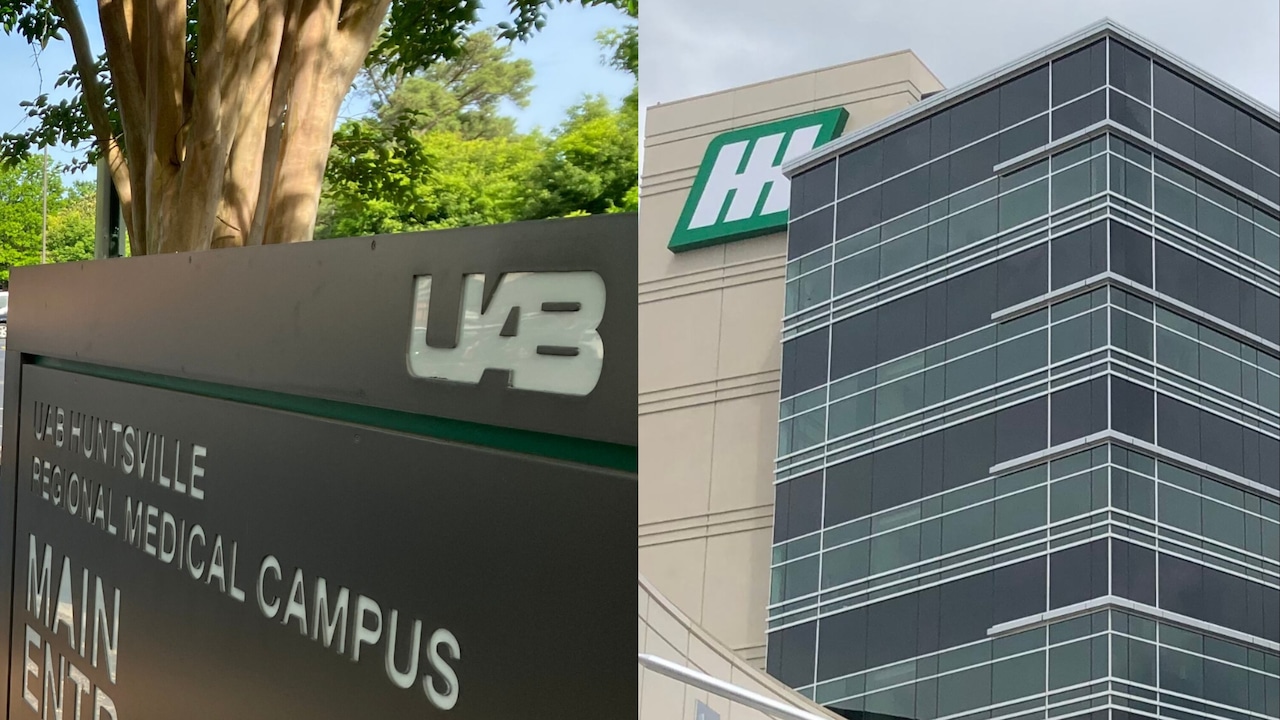Huntsville Hospital Health System remains Alabama’s largest hospital network by several key measures, edging out UAB Health System despite the recent acquisition of St. Vincent’s, an AL.com analysis shows.
The state’s 10 largest hospital systems generated an average of $1.2 billion each in patient revenue in 2024 and 2025. Combined, those systems employ about 85,000 people and operate more than 10,000 licensed beds — nearly one in six of all beds statewide.
At a glance: Alabama’s top hospital systemsTop revenue: UAB Health System — $2.7 billionTotal licensed beds (Top 10): 10,000Most beds: Huntsville Hospital — 2,782Most locations: Huntsville Hospital — 118Largest employer: UAB Health System — 24,000 staffAverage revenue (Top 10): $1.2 billionRevenue leaders
UAB Health System led in net patient revenue with $2.7 billion. That doesn’t include another $820 million reported by UAB St. Vincent’s, which would bring UAB’s total to more than $3.5 billion. No other system was close, with Huntsville Hospital bringing in $2.6 billion. USA Health in South Alabama ranked a distant third at $1.2 billion.
[Can’t see the list? Click here.]
Beds and locations
Huntsville Hospital topped the list for licensed beds with 2,782, compared to 1,700 for Birmingham-area Baptist Health and 1,207 for UAB. The St. Vincent’s acquisition would add nearly 900 more beds to UAB’s total, enough to move into second place, but not enough to overtake Huntsville Hospital.
[Can’t see the list? Click here.]
Huntsville Hospital also operated by far the most locations — 118 across multiple counties, even bleeding over into Tennessee. USA Health and Infirmary Health System, which also operates in South Alabama, trailed with 45 and 44, respectively.
UAB was fourth on that list with 41 locations, but St. Vincent’s operates another 28. That combined total of 69 locations would be good enough for second place.
[Can’t see the list? Click here.]
Employment
UAB remained the state’s largest health care employer with 24,000 workers, ahead of Huntsville Hospital’s 20,000. That lead only grew with the addition of 5,200 workers from St. Vincent’s. No other systems came close to the big two, with third place USA Health employing just 7,200 workers.
[Can’t see the list? Click here.]
These findings were based on information from the hospital systems’ spokespersons, websites, and reports, including some net patient revenue numbers from Definitive Healthcare, a hospital data company. AL.com compiled the number of counties, cities and states served by each system, with Huntsville Hospital leading Alabama in each of those categories. Finally, AL.com looked at how long each hospital system has served its area, with UAB hospital boasting the oldest roots, starting in 1859.
Overall, Huntsville Hospital ranked first in five of the eight categories that AL.com explored. UAB led in three. The acquisition of St. Vincent’s was enough to move UAB up the list in some categories, and to extend its lead in others, but didn’t see the system overtake Huntsville Hospital in any of those five categories.
Rural hospitals struggle
While the state’s largest systems expand, rural hospitals face mounting challenges. Many are operating at a loss and have cut obstetric services, said Farrell Turner, former president of the Alabama Rural Health Association.
Turner warned that the trend could have long-term consequences for maternal and infant health, particularly in southwest Alabama counties such as Clarke, Marengo and Wilcox.
“A lot of small, especially small rural hospitals are no longer offering obstetric services,” Turner said. “The alternative is they just show up in the ER and that’s not a good situation or they’ve got to travel a great distance.”
If you purchase a product or register for an account through a link on our site, we may receive compensation. By using this site, you consent to our User Agreement and agree that your clicks, interactions, and personal information may be collected, recorded, and/or stored by us and social media and other third-party partners in accordance with our Privacy Policy.

